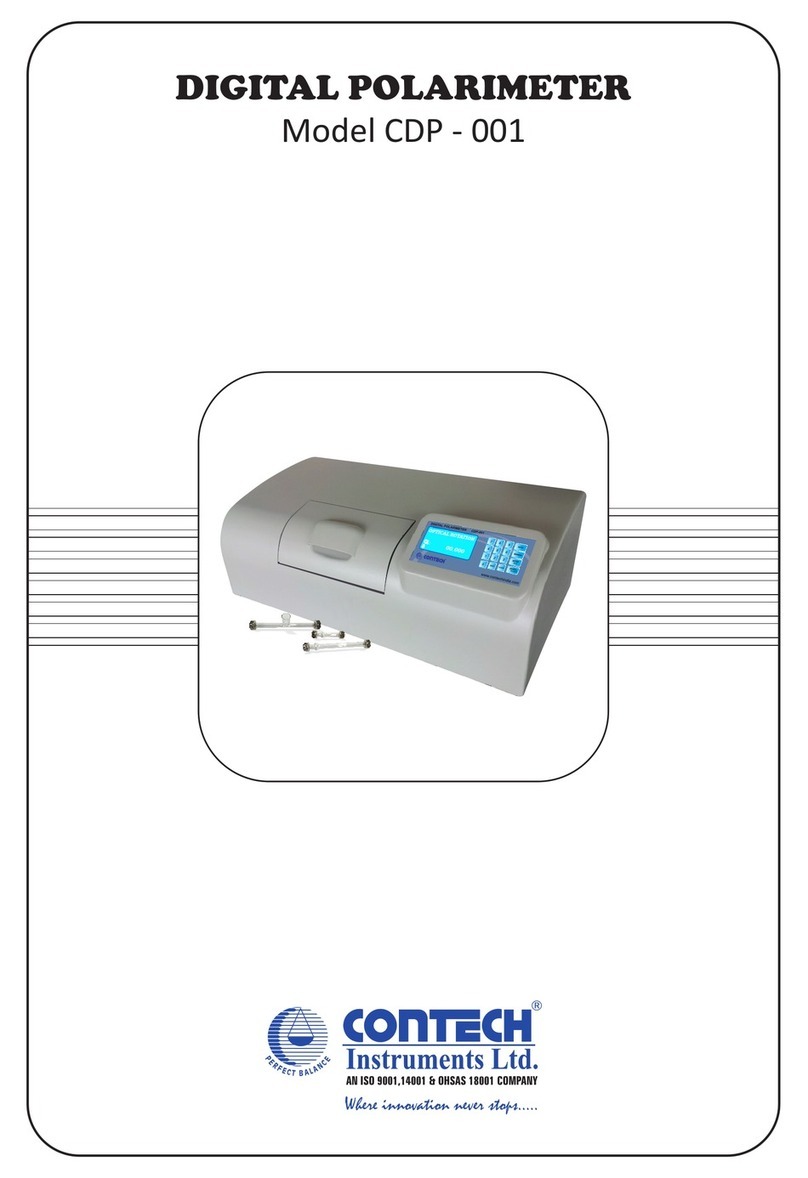
61393000
CHAPTER 1
INTRODUCTION
Contech CDO-01 measures Dissolved Oxygen and temperature of liquids It can be used
in a variety of fields such as industrial, agriculture, environmental studies and scientific
research laboratory
ABOUT CDO-01 MODEL.
Dissolved Oxygen meter, Model CDO-01, is a microprocessor based instrument, which
measures Dissolved oxygen and salinity and temperature of a liquid under test Meter
supports ATC (Automatic temperature compensation) feature which corrects the electrode
output changes due to temperature variation of the sample being tested There is also an
option to enter the temperature of measuring solution manually Also there is an option to
enter the Atmospheric Pressure for correcting changes due to it The following are the
salient features of CDO-01 meter
Advanced Microprocessor based design
DO and Conductivity
DO in Saturation % and mg/L
DO correction for Temperature, Atmospheric pressure and Salinity
Polarographic Electrode
Automatic and Manual temperature Compensation
Single or Multi point calibration of Salinity
Cell Constant adjustable from 0 1 to 10 0
Temperature Coefficient adjustable from 0 to 10%/ oC
Normalisation temperature adjustable from 15 to 30 oC
Bi directional RS232 interface Baud rate selectable from 1200,2400,4800 and
9600
Single and continuous print out of DO and Conductivity
Multiple Printout types Combinations selectable from Sr No , DO/Conductivity,
Date, time and temperature
Real Time Clock
Temperature setting (Manual temperature compensation)
Calibration report as per GLP requirements
LCD display with Backlight
Memory storage of 100 measurements
Data logging facility up to 500 results Data logging interval selectable from 5S,
10S, 20S, 30S, 1M, 2M and 5M





























